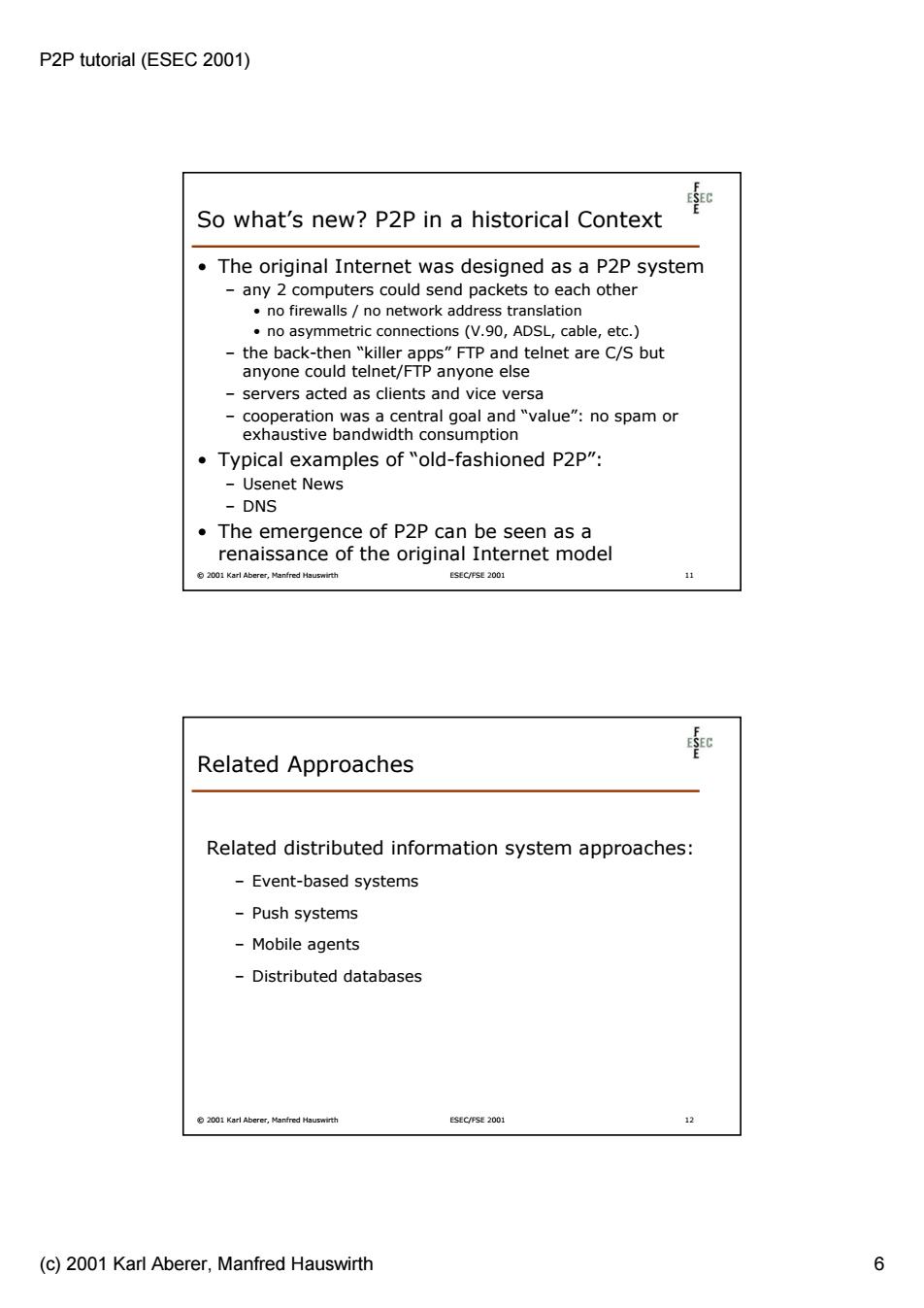正在加载图片...

P2P tutorial (ESEC 2001) 和 So what's new?P2P in a historical Context The original Internet was designed as a P2P system any 2 computers could send packets to each other no firewalls no network address translation no asymmetric connections(V.90,ADSL,cable,etc.) the back-then "killer apps"FTP and telnet are C/S but anyone could telnet/FTP anyone else servers acted as clients and vice versa cooperation was a central goal and "value":no spam or exhaustive bandwidth consumption .Typical examples of "old-fashioned P2P": -Usenet News -DNS The emergence of P2P can be seen as a renaissance of the original Internet model 82001 Karl Aberer,Manfred Hauswirth ESEC/FSE 2001 11 Related Approaches Related distributed information system approaches: Event-based systems -Push systems Mobile agents Distributed databases 2001 Karl Aberer,Manfred Hauswirth ESEC/FSE 2001 12 (c)2001 Karl Aberer,Manfred Hauswirth 6P2P tutorial (ESEC 2001) (c) 2001 Karl Aberer, Manfred Hauswirth 6 © 2001 Karl Aberer, Manfred Hauswirth ESEC/FSE 2001 11 So what’s new? P2P in a historical Context • The original Internet was designed as a P2P system – any 2 computers could send packets to each other • no firewalls / no network address translation • no asymmetric connections (V.90, ADSL, cable, etc.) – the back-then “killer apps” FTP and telnet are C/S but anyone could telnet/FTP anyone else – servers acted as clients and vice versa – cooperation was a central goal and “value”: no spam or exhaustive bandwidth consumption • Typical examples of “old-fashioned P2P”: – Usenet News – DNS • The emergence of P2P can be seen as a renaissance of the original Internet model © 2001 Karl Aberer, Manfred Hauswirth ESEC/FSE 2001 12 Related Approaches Related distributed information system approaches: – Event-based systems – Push systems – Mobile agents – Distributed databases